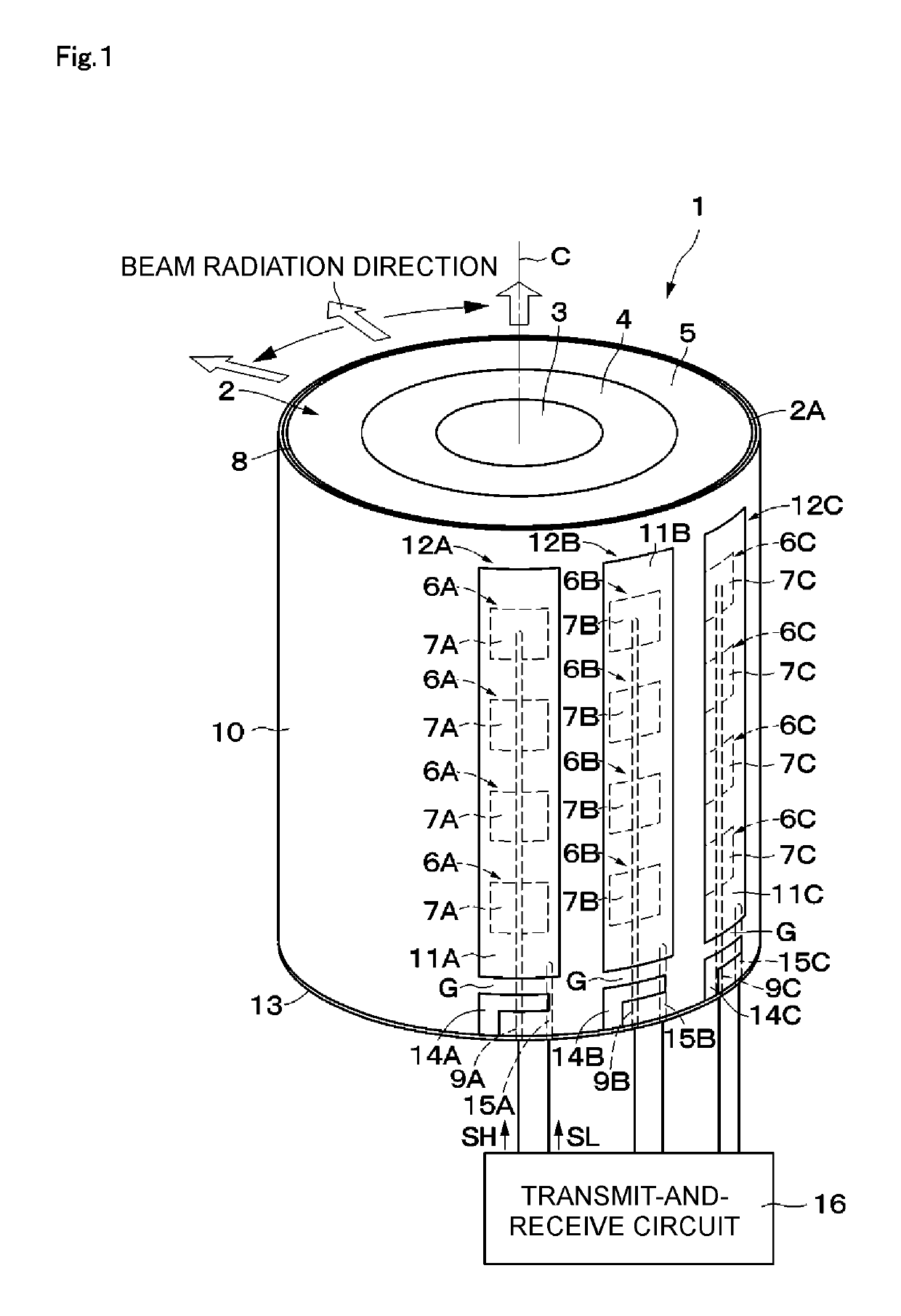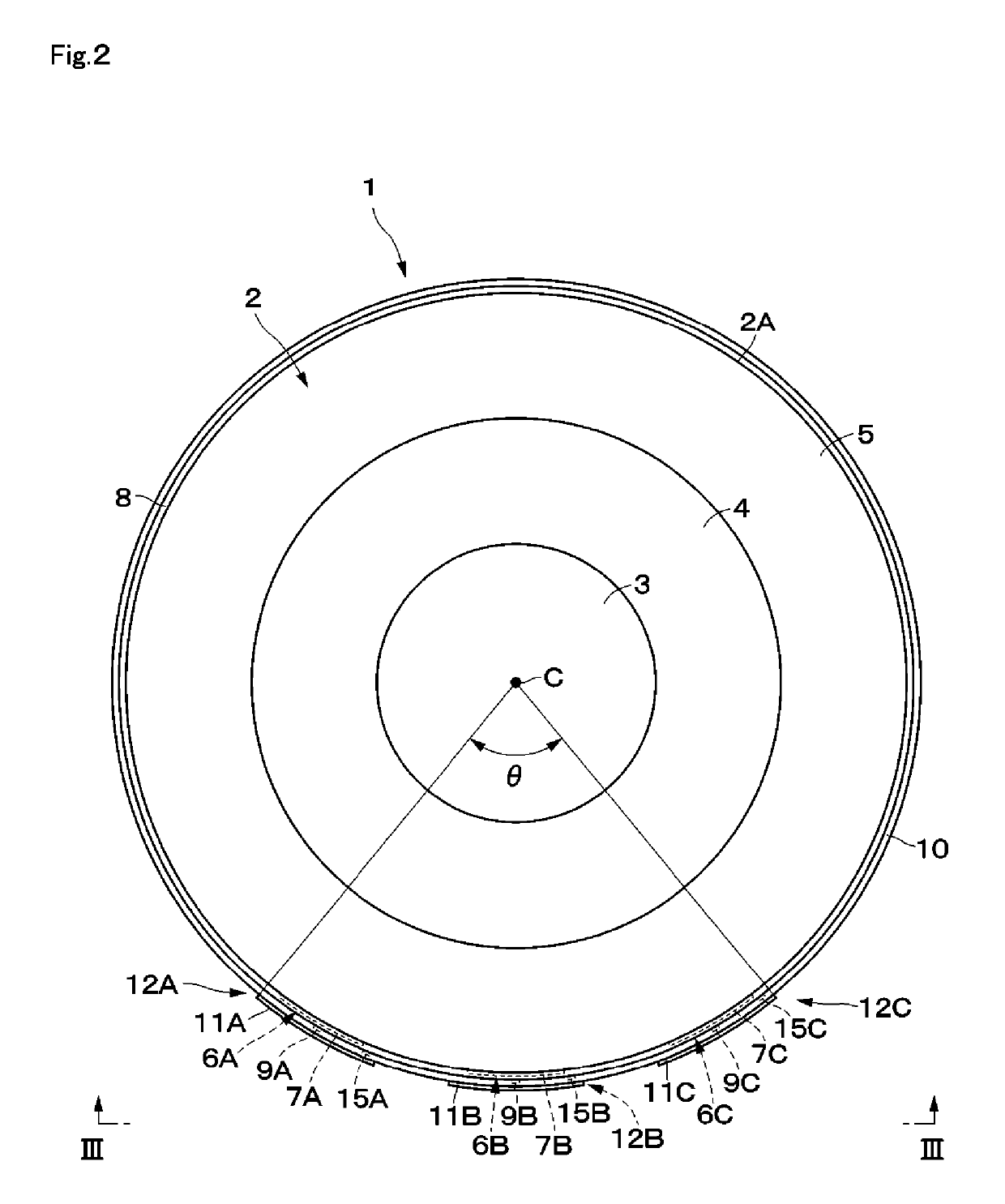Luneburg lens antenna device
a technology of lens antenna and antenna device, which is applied in the direction of individual energised antenna array, resonant antenna, substantially flat resonant elements, etc., can solve the problems of low-frequency mimo antenna and high-frequency mimo antenna not being integrated, and achieve the effect of reducing the size of the entire device and high directivity
- Summary
- Abstract
- Description
- Claims
- Application Information
AI Technical Summary
Benefits of technology
Problems solved by technology
Method used
Image
Examples
Embodiment Construction
[0033]Luneburg lens antenna devices according to embodiments of the present disclosure will be described below in detail with reference to the accompanying drawings.
[0034]A Luneburg lens antenna device 1 (hereinafter called the antenna device 1) according to a first embodiment is shown in FIGS. 1 through 12. The antenna device 1 includes a Luneburg lens 2, patch antennas 6A through 6C, and low-frequency antennas 12A through 12C.
[0035]The Luneburg lens 2 and the patch antennas 6A through 6C which form high-frequency MIMO antennas will first be discussed below.
[0036]The Luneburg lens 2 is formed in a cylindrical shape and has a distribution of different dielectric constants in the radial direction. More specifically, the Luneburg lens 2 includes plural (three, for example) dielectric layers 3 through 5 stacked on each other from the center to the outside portion in the radial direction. The dielectric layers 3 through 5 have different dielectric constants ε1 through ε3, respectively, ...
PUM
 Login to View More
Login to View More Abstract
Description
Claims
Application Information
 Login to View More
Login to View More - R&D
- Intellectual Property
- Life Sciences
- Materials
- Tech Scout
- Unparalleled Data Quality
- Higher Quality Content
- 60% Fewer Hallucinations
Browse by: Latest US Patents, China's latest patents, Technical Efficacy Thesaurus, Application Domain, Technology Topic, Popular Technical Reports.
© 2025 PatSnap. All rights reserved.Legal|Privacy policy|Modern Slavery Act Transparency Statement|Sitemap|About US| Contact US: help@patsnap.com



